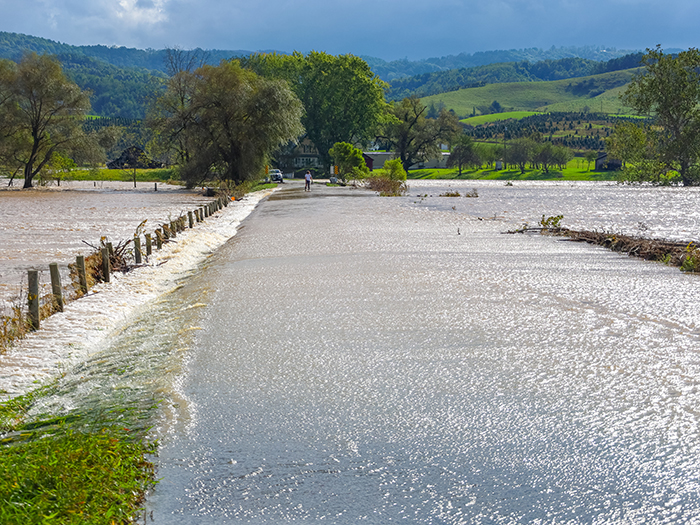Black Swans
Matrix Rising

Interconnectivity, whether it be the grid, or the digital economy, is the hallmark of our new global marketplace, but as our 2017 Black Swan coverage will illustrate, it may also be our greatest weakness.
The aggregation risks should the grid in the United States be knocked out — or our cloud services attacked — are concerns shared by underwriters and risk managers.
There is no off-the shelf product to counteract these risks. They could strike at any moment with catastrophic severity.
Counteracting them will require expert execution in the art of spreading risk, either through more astute contracts with vendors and customers, or much better communication, and of course policy writing, on the part of the carriers and their insureds.
 Chaos From Above, a harrowing account of a terrorist EMP attack, is all the more chilling to consider as worldwide political tensions increase.
Chaos From Above, a harrowing account of a terrorist EMP attack, is all the more chilling to consider as worldwide political tensions increase.
 Breaking Clouds imagines a group of activists radicalized to the point of terrorism, bent on bringing corporate America to its knees.
Breaking Clouds imagines a group of activists radicalized to the point of terrorism, bent on bringing corporate America to its knees.
This marks the fifth year that Risk & Insurance editors and writers outlined the risks of Black Swans. A look back at some of our previous Black Swan coverage is below.
A Look Back
Since August of 2013, Risk & Insurance writers and editors have interviewed academics, government officials, reinsurers and risk consultants to get their take on Black Swans, very rare events that could strike with catastrophic severity.
Here are a few examples of Black Swan events we’ve written about over the past five years. At the time we wrote about many of them, they seemed almost fantastical. Yet, with each passing year, the likelihood of them occurring seems to increase.
August 2014: Ice Storms Knock Out the Grid in the Northeast The increasingly glaring combination of extreme weather and vulnerable infrastructure give even more credence to a Black Swan scenario we constructed in 2014: that a series of ice storms (two major ones would suffice) could cripple the grid in the Northeast. All it would take is two very heavy ice storms over three days to potentially knock out electrical service to millions. Were that to occur, our sources at the time stipulated that insured losses could reach between $9.5 billion and $15.5 billion.
 August 2015: Welcome to the ARkstorm The prospect of a superstorm buffeting California for more than 40 days isn’t a fantasy. Atmospheric rivers, or ARkstorms, struck California at least six times, according to studies by geologists. Our 2015 scenario, as dreadful as it may be to consider, projected $400 billion in property damage, only $20 billion to $30 billion of which would be recoverable, should torrential rains drench California for weeks and drown its infrastructure, its agriculture and many of its iconic landmarks. The most recent ARkstorm was 1861. Flooding closed the capital of Sacramento and the whole Central Valley became a lake.
August 2015: Welcome to the ARkstorm The prospect of a superstorm buffeting California for more than 40 days isn’t a fantasy. Atmospheric rivers, or ARkstorms, struck California at least six times, according to studies by geologists. Our 2015 scenario, as dreadful as it may be to consider, projected $400 billion in property damage, only $20 billion to $30 billion of which would be recoverable, should torrential rains drench California for weeks and drown its infrastructure, its agriculture and many of its iconic landmarks. The most recent ARkstorm was 1861. Flooding closed the capital of Sacramento and the whole Central Valley became a lake.
August 2016: Political Black Swans In August of 2016 we wrote about populist swells, swept to a fever pitch by anger, alienation and the Internet that could cause major political disruption. In November of 2016, just such a disruption took place, as businessman and reality television star Donald Trump was elected as the 45th president of the United States. Now the compliance and agreement of the U.S. in everything from the Paris Climate Change accord, to the North American Free Trade Agreement, to our support for NATO is uncertain.











